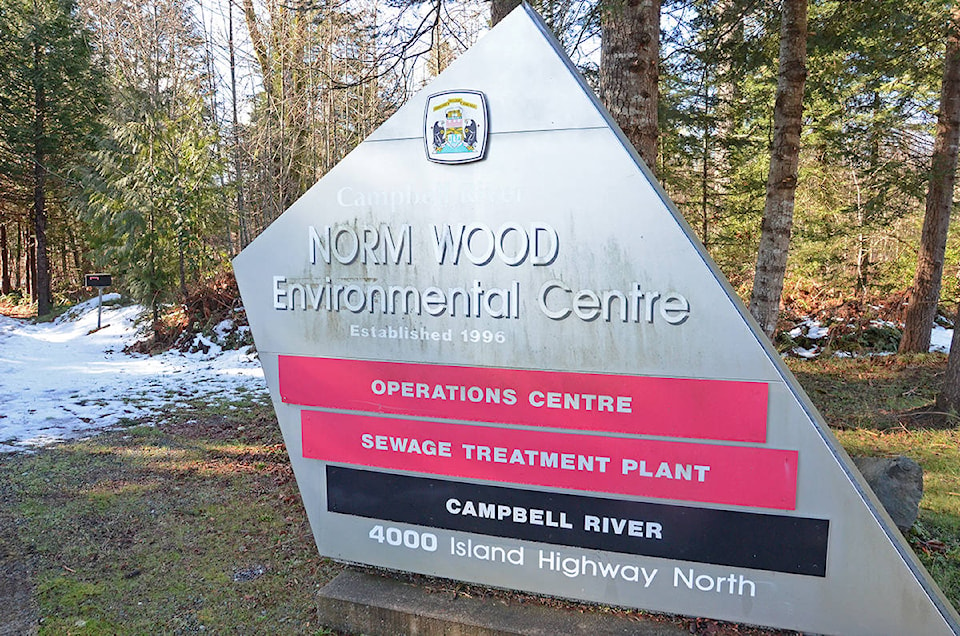Comox Strathcona Waste Management (CSWM) is looking at two sites in the Campbell River area as potential locations for an organics composting facility.
The move is part of the region’s Solid Waste Management Plan for CSWM, which represents the two regional districts of Comox Valley and Strathcona and includes board members from both.
The project picks up on work started by the City of Campbell River, which had applied for a grant that was unsuccessful back in 2015.
“They were the driving force,” CSWM senior solid waste manager Andrew McGifford told board members during a recent CSWM meeting.
CSWM adopted the project and received a grant in 2017 for a regional site. That year, Infrastructure Canada announced funding of $5.5 million for the facility, with the remaining $2.77 million of the then-$8.3 million project to be funded locally. A recent consultant’s report estimated the costs now would likely be just over $12 million because additional tonnage capacity proposed for the facility and increasing construction costs.
RELATED STORY: Comox-Strathcona waste plan update could be costly
CSWM started a working group for the project, with the aim of meeting the goal of diverting 70 per cent of materials away from landfills by 2022.
“There’s a lot of desire within the public to recycle this material and have this program in place,” he said.
Part of the rationale for siting the operation in Campbell River is to take advantage of “back-haul” opportunities, by filling trucks from Campbell River with garbage for the landfill in the Comox Valley and bringing trucks back with organics from the Comox Valley for the Campbell River facility, once the landfill in Campbell River closes and garbage is taken to the regional site in the Comox Valley.
The area identified in the application was at the Norm Wood Environmental Centre, which currently provides wastewater treatment in the city, as the location for the organics facility, one reason being to cut down on transport costs.
McGifford also discussed specifics of the program and the procurement process, which is expected to be design-build-operate (DBO), adding this will need to be determined soon for the municipalities because of their contracts with haulers.
The CSWM needs to decide on a site though. Staff feel the Norm Wood site can handle the volume and expand over the long term. However, the service is also looking at Block J adjacent to Campbell River Waste Management Centre, the current landfill west of the city.
“We need some direction from the board to get moving on this,” he said.
Arzeena Hamir, the Area B director for Comox Valley, questioned why the region was planning to use a DBO model for procurement rather than have CSWM operate the facility itself. McGifford replied that they need to bring in technical skills.
“We need the expertise to operate these,” he said.
Some new board members also questioned why the facility will be located in Campbell River alone, rather than having one in the Comox Valley. In response, Andy Adams, Campbell River’s mayor and one of the board representatives, said that moving organics to Comox Valley would only double transportation costs because of lost back-haul opportunities.
“You will be hauling empty two times,” he said.
RELATED STORY: Comox Strathcona Waste Management falls back on tax hikes
He also pointed out that there was 60/40 cost split between the two areas, respectively, yet the organics facility would cost significantly less than 40 per cent of overall cost.
The main opposition to the idea came from Brenda Leigh, the Area D director from Strathcona. She has questioned spending $8 million to haul organic material around by trucks when it is mostly water, describing these these programs as “boutique options.”
Edwin Grieve, the Area C director in the Comox Valley, responded that the service is already hauling around organic material but it is hidden inside garbage bags going to the landfill.
Leigh also said only Campbell River and municipalities will benefit from the program, but everyone will pay. Staff later clarified the municipalities who use it will pay for the program through tipping fees, though rural areas would if they decided to take part.
Another issue Leigh cited was the potential for smells, referring to a composting project more than a decade ago. She mentioned potential lawsuits from any residences affected nearby. For that reason, she preferred the Block J site over Norm Wood.
“Having it at Norm Wood, you’re asking for a lot of trouble,” she said.
Chief administrative office Russell Dyson said staff are confident Block J could work, if needed. A staff recommendation stated they continue to evaluate it while working with Campbell River on making the Norm Wood site work. A consultant looked at several different sites within Norm Wood. A staff report mentions some issues such as proximity to residential areas and wetlands. It also notes the consultant looked at four locations within Norm Wood.
Beyond where the site should go, another issue is when to decide. Adams noted there is a “sunset clause” on the grant for CSWM, adding the board has already decided to go ahead on the project.
“I would caution against revisiting that,” he said.
His Campbell River colleague Michele Babchuk reiterated the need to decide on a site soon or risk losing the grant
“This is becoming very time sensitive,” she said.
At the end of the discussion, the board passed the recommendation for staff to analyze and compare sites. A further resolution for staff to seek approval from provincial ministries and agencies for siting at either the Norm Wood or Block J location also passed, with Leigh opposing.
